QR codes in the classroom: 8 Ideas for any classroom setting.
As the use of technology in the classroom is becoming more and more evident, an increasing number of teachers are looking for ways to implement innovative teaching methods so as to keep students engaged throughout the education process.
In specific, with the use of mobile devices in the classroom educators can now make great use of the QR codes. The QR (quick response) code is a form of barcode, which by being scanned leads to a digital destination. This destination does not necessarily have to be a website, as it could also be a page on Facebook, a YouTube video, a document or any kind of data or content. All mobile devices come with pre installed applications that are used for scanning QR codes, and many such applications are available for free download for such devices. QR codes are extremely user friendly as they can be created very easily and free on many websites such as www.qrstuff.com. There, the educator can quickly and easily link the required data or content to a QR code that has just been created and then utilize it in print or digital form in a myrial of ways. Some ideas could be the following:
- Literacy Enhancement. The teacher can link a passage or a whole e-book to a QR code, so the students can then simply scan the code and access the text.
- Quizzes and Testing. By scanning a QR code students can also be redirected to a destination where they could take a small quiz or test. Such quiz could be created with Google Docs or could be part of a Learning Management System of the school, where all information such as marks is stored centrally.
- Polls and Voting. Similarly as above, students could also participate in quick polls, either anonymously or not.
- Accessing video content. As already mentioned above, the QR code can redirect somebody to watch a video. In this way students can simply access video content on their mobile devices and watch it at their own pace.
- Online collaboration. A very interesting way of using QR codes would be for collaborating online. For instance, students could be accessing a shared Google Doc or contribute in a shared classroom blog simultaneously. In this way, they could all work together, from their mobile devices towards the same goal.
- Projects- Presentation. Students could also be the ones creating QR codes. In cases where they have to compile research or present their findings they could also use QR codes in order to present data.
- Scavenger Hunts. Perhaps the most exciting way of using QR codes in the classroom is in scavenger hunts. Here students could be scanning the QR codes (which may be hidden) in the classroom, in order to find clues and accomplish their mission.
- Differentiated or Staged Learning. QR codes allow the teacher to even accommodate the needs of a mixed ability class. In particular, each student may have to scan their own QR code with resources, which could be specifically tailored to their needs. Likewise, in a classroom setting where students have to go through different stages in order to complete the learning process, having them scan QR codes can make this whole process much easier to run.
Overall, it seems that there are many ways in which QR codes can be utilized in the classroom. Of course, the above list is not exhaustive as educators can come up with many types of content which can be linked to a QR code. Ultimately, the most important benefit that we can have from QR codes is theflexibility that they offer, the ease of use and the increased engagementamong students. So, go ahead and experiment and please add more ideas in the comment box below.
Creative Storytelling with Rory’s Story Cubes
Even though there has been much research on the benefits of storytelling in learning, there haven’t been any adjustments in today’s educational system so as to allow room for creativity from students. Therefore, apart from the occasional essay tasks, which are also very structured, students are not prompted to do any kind of creative tasks let alone creatively produce language in written or spoken form.
Fortunately, creative toys such as Rory’s Story cubes allow for the production of language in a creative way. In specific, a typical version of such toy would be composed of 9 dices with each one having 6 different drawings on them. The students can simply role the dices and start storytelling. There are over 10,000 combinations and the possibilities for different stories are infinite, as each student can perceive each drawing in a different way. These stories can even be recorded in any way so as to provide feedback on them.
The application of such toy in a language classroom setting would help a lot any kind of student, especially when it comes to speaking. From the verbal and outgoing student who is striving to find opportunities to share his thoughts and imagination, to the introvert who is too afraid to express any kind of thoughts.
All in all, using Rory’s story cubes can be an excellent filler task in a language classroom setting, in order to engage students more and motivate them to speak in class.
Blended Learning: Towards a more personalized approach in a traditional school setting.
Many have been arguing for the benefits of the classroom setting in education, as social learning allows for a multi-fold approach in education, especially when it comes to language learning. But what should be done about students of different levels? And how can we address different learning styles?
Differentiation is a key issue, when it comes to teaching in a classroom. Fortunately, the advent of technology has allowed for extra room for differentiation in teaching. The blended learning approach is a method that combines traditional teaching methods with e- learning tools. In other words, the teacher or facilitator may teach in a traditional way but at the same time enrich the education process with extra activities that the students can carry out at school or at home.
There are many blended learning models that a teacher or school can implement. In specific, the variations differ according to the level and extent of the e- learning tools and the structure in which they are used. For example, a teacher may introduce different activities for students according to their level and learning needs. Or extra material can be assigned to students so as to ensure that all students have mastered the concepts that are being taught at school. There are many tools (usually refer to as WEB 2.0 tools) and many systems (LMS- Learning Management Systems) that allow for such differentiation.
To sum up, while teachers can reap the benefits of the traditional classroom teaching, they can also differentiate in the classroom with the use of many tools, so as to ensure that all students are eventually on the same page. Within the near future we shall also be looking at specific ways of how to incorporate blended learning methods into traditional teaching.
6 Uses of Mobile Devices for Learning
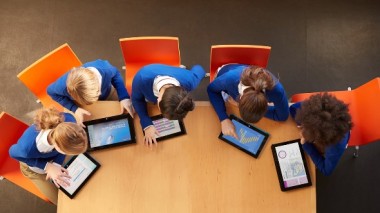 Mobile devices such as smartphones and tablets can be used in and out of the classrooms. Students can get help with their homework through the use of exciting Apps and access learning content that can only be found in digital form. Below are the six main ways in which mobile devices can be used in learning.
Mobile devices such as smartphones and tablets can be used in and out of the classrooms. Students can get help with their homework through the use of exciting Apps and access learning content that can only be found in digital form. Below are the six main ways in which mobile devices can be used in learning.- Accessing digital content such as e-books. Apps such as Amazon’s Kindle allow the students to access hundreds of thousands e-books, plus loads of classic books for free.
- Quizzes. Teachers can create quizzes, polls or small tests of any form and get students to undertake them in the classroom. Apps such as Kahoot,Socrative and Google forms can make quizzes quite interactive and fun.
- Taking Notes. Students can use one of the numerous Apps available, such as Evernote, in order to take down notes or organize their thoughts and even create personalized To-do lists.
- Augmented reality. Students can now use breakthrough Apps such as theGoogle Sky Map, GeoGoggle and many others to explore their surroundings in an amazing way. Note, that augmented reality is an evolving field, so there are more exciting things to come.
- Scavenger Hunts. The teachers can now create QR codes which represent various data, such as a website, a video or any kind of file. QR codes are found everywhere, they look like bar codes, and all smart phones have a preinstalled App that can scan and access such a QR code. So, put that into action alongside the imagination of the teacher, the possibilities for an exciting scavenger hunt are endless.
- Learning Management Systems (LMS). More and more providers of Learning Management Systems have also come up with an App that offers all the possibilities that are available on the Internet. So, with applications such as Edmodo, Moodle and many others, students can have access to content and take quizzes that their teachers have created.
As with most aspects of technology, the possibilities that mobile devices offer for education are endless. With new Apps and tools being developed all the time, educators need to be continuously updated and familiarized, so that teaching is moved to the next level.
How big is your Vocabulary?
Would you like to know how big your vocabulary is?
A very quick and easy fun way to do that is through the testyourvocab.comwebsite. All you have to do is complete 3 steps, where you just tick the words that you already know. Note that each time you go through these steps random words come up. In the end, the website provides you with an estimated number of English words that you know.
So, what a way to get students engaged into learning vocabulary, while it is ideal for non-native as well as native English speakers. Such a tool could be used in higher level English classes (C2 Proficiency level) in which the learners really need to possess a very big vocabulary.
So, next time somebody tells you that they know more English words than you, why don’t you challenge them and have a go at this simple yet intuitive tool.
Have fun!
Mobile Devices in Education
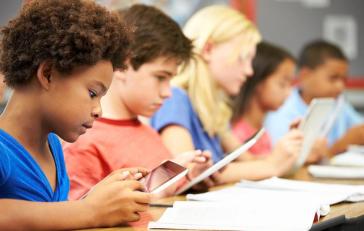 It is widely accepted that mobile technology has transformed our lives. Cell phones and other mobile devices have numerous capabilities apart from texting and browsing the Net. The advent of mobile apps, mainly for IOS or Android devices, has offered amazing possibilities. Moreover, such devices are now used by all age groups, since they are becoming more and more user friendly, with teenagers and preteens being the most prevalent groups.
It is widely accepted that mobile technology has transformed our lives. Cell phones and other mobile devices have numerous capabilities apart from texting and browsing the Net. The advent of mobile apps, mainly for IOS or Android devices, has offered amazing possibilities. Moreover, such devices are now used by all age groups, since they are becoming more and more user friendly, with teenagers and preteens being the most prevalent groups.
Therefore, it is obvious that these technological advances have taken the education sector by storm. Since, there has been a great number of mobile Apps that have been developed specifically for aiding learning, an increasing number of students and teachers are using such devices in and out of their classrooms.
In specific, in the US almost half of the students have used a mobile app for learning purposes, and 60% of teachers claim that mobile devices such as the iPad can improve the quality of the students’ work. But how is this true? In what way can mobile devices such as cell phones and tablets aid learning?
First of all, students can become more engaged with the learning content throughout the lesson, in a myriad ways. Mobile devices can be used by students to answer quizzes, tweet learning topics, share content and look up information. Moreover, mobile devices can be used outside of the classroom as well. The students can get help with their homework through the use of exciting Apps and access learning content that can only be found in digital form.
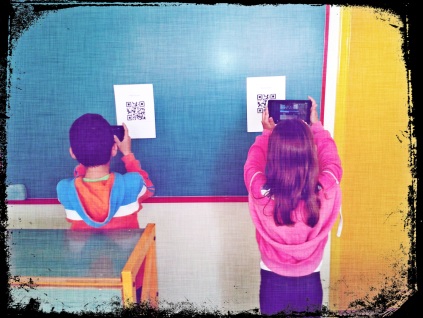
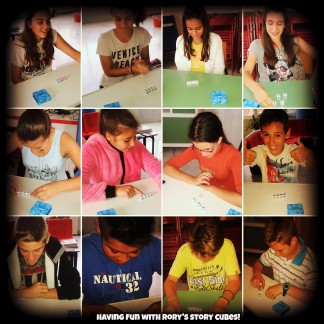
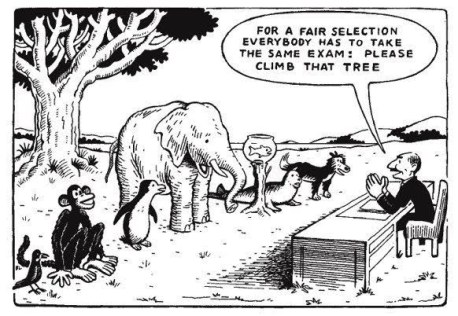
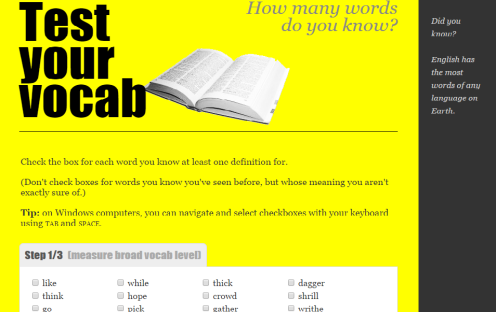
Немає коментарів:
Дописати коментар